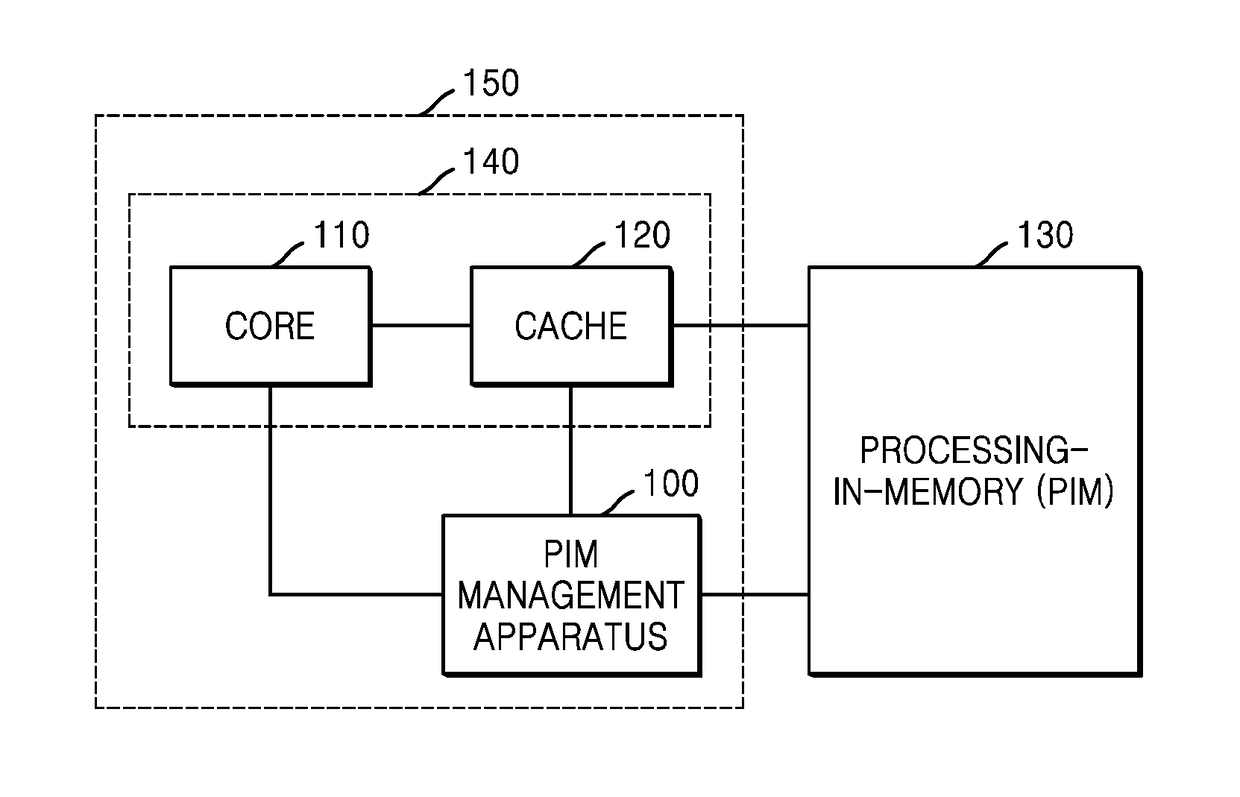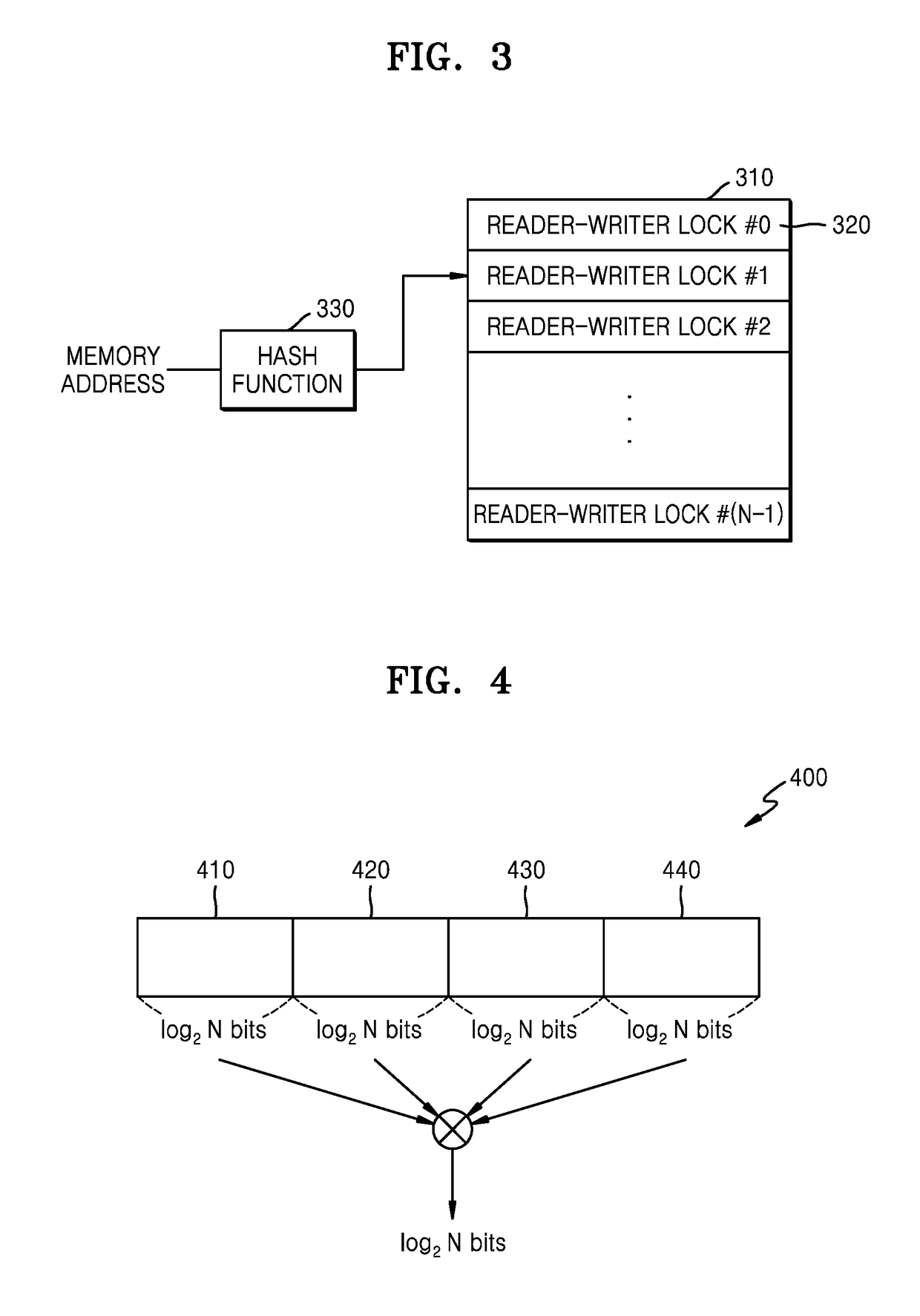Method and apparatus for processing instructions using processing-in-memory
a processing instruction and memory technology, applied in the field of processing instructions using a processinginmemory, can solve the problems of programmer's much effort, the performance improvement of processors tends to decline, and the overall performance deterioration, so as to achieve data intensive applications, memory bandwidth may be accelerated, and performance limited
- Summary
- Abstract
- Description
- Claims
- Application Information
AI Technical Summary
Benefits of technology
Problems solved by technology
Method used
Image
Examples
Embodiment Construction
[0026]Hereinafter, a method and apparatus for processing instructions using a processing-in-memory (PIM) according to the present disclosure will be described in detail with reference to the accompanying drawings.
[0027]FIG. 1 illustrates a structure for PIM instruction processing according to an embodiment of the present disclosure.
[0028]Referring to FIG. 1, a processor 150 includes at least one core 110, at least one cache 120, and a PIM management apparatus 100. The processor 150 may be implemented in various forms such as a central processing unit (CPU) or a graphic processing unit (GPU). The PIM management apparatus 100 may be implemented in the processor 150 or may be implemented separately from a part 140 including the core 110 and the cache 120. In another embodiment, the PIM management apparatus 100 may be implemented as a partial configuration of the core 110 or the cache 120. The present embodiment corresponds to an embodiment for processing PIM instructions, and a hardwar...
PUM
 Login to View More
Login to View More Abstract
Description
Claims
Application Information
 Login to View More
Login to View More - R&D
- Intellectual Property
- Life Sciences
- Materials
- Tech Scout
- Unparalleled Data Quality
- Higher Quality Content
- 60% Fewer Hallucinations
Browse by: Latest US Patents, China's latest patents, Technical Efficacy Thesaurus, Application Domain, Technology Topic, Popular Technical Reports.
© 2025 PatSnap. All rights reserved.Legal|Privacy policy|Modern Slavery Act Transparency Statement|Sitemap|About US| Contact US: help@patsnap.com



